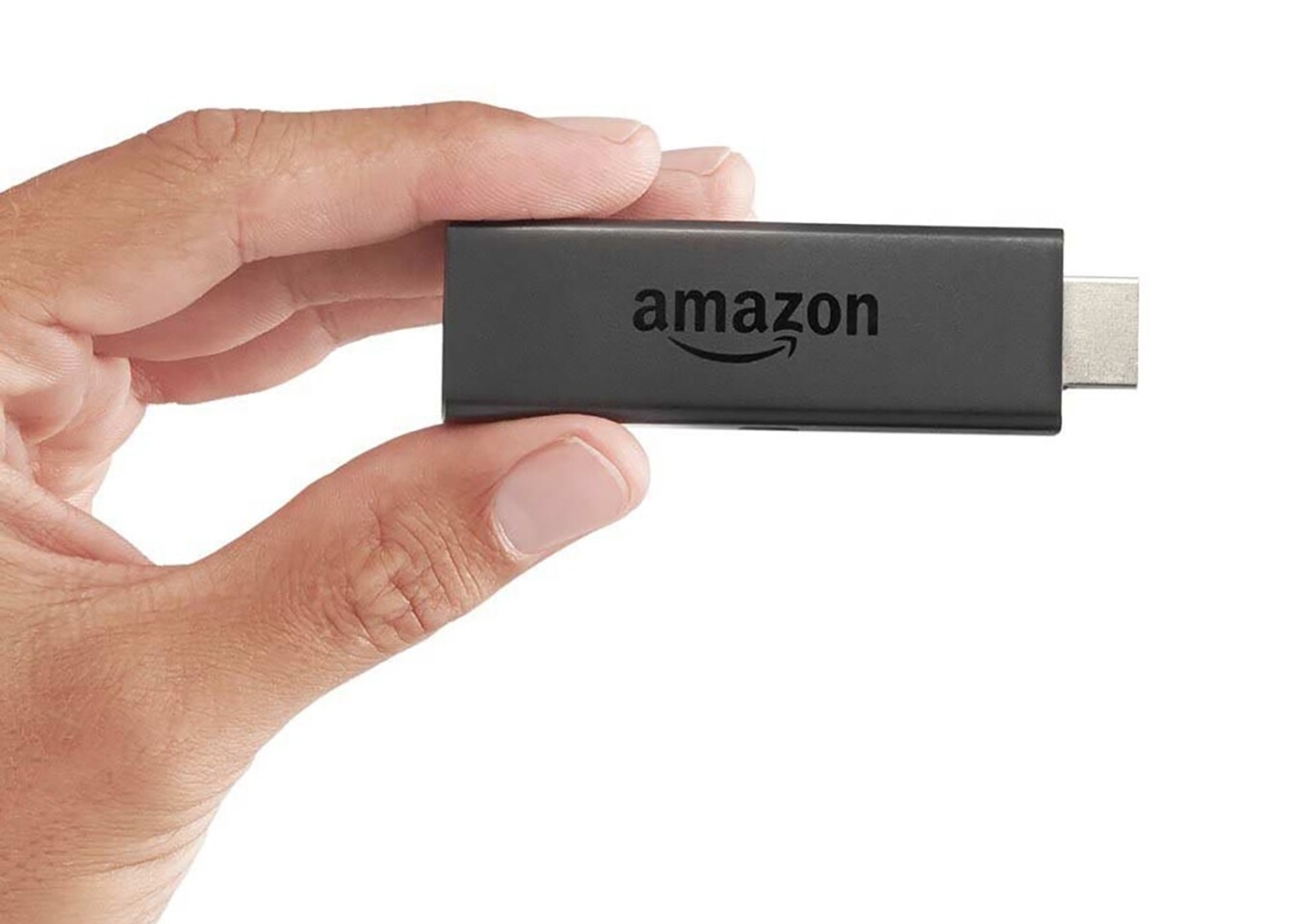From Netflix to iTunes and everything in between, there's now a plethora of services for delivering video over the web. Those TV shows and movies don't look their best on your 13-inch laptop though, which is why we've also seen a rise in the number of boxes, dongles and streamers built to get content from the internet up on the big screen in your living room. Join us as we break down the best streaming boxes and other streaming devices of 2015.
Picking through the different options for set-top boxes and streamers is no easy task. All these bits of gadgetry have slightly different approaches and capabilities, so we're here to help you make some sense of the market and identify the best hardware of 2015. We'll start off with a broad look at the features you need to consider, then list specific products that are worth putting on your shopping shortlist.
Features

All of the devices we're considering here get video from the web to your television screen, usually via HDMI cable. Outside of that basic similarity, there's plenty of variety: some streamers are sticks you plug straight into the back of a set, while others are small boxes that sit underneath; some dongles need your phone to work, others can operate independently.
It's worth considering what else you want your new gadget to do besides video streaming. Some add music, photo viewing and even gaming to the mix as well as video from the usual providers, so if you think you'll find these extra features handy then go for a device that includes them. A number of devices let you view locally saved files (via a memory card or external hard drive) which is a feature many users will find helpful.
Some of the top-end devices are now starting to offer 4K streaming as well. While there's only a smattering of 4K content available on the likes of Netflix and YouTube at the moment, if you want to future-proof your purchase then it might be worth spending a little extra to get it. You're also going to need a speedy web connection fast enough to support it, of course.
Apps

A nice new set-top streaming box or dongle isn't much use if you don't have anything to watch on it. Apps such as Netflix, iTunes, HBO Go, Google Play Movies & TV, Amazon Instant Video, Hulu and others are crucial to your viewing experience, and not all boxes offer all of these apps. If there are official news catch-up TV services in your part of the world, like BBC iPlayer, then some of these may be supported too.
If there's an app you're particularly tied to, you'll want to check to see if it's supported on each device (we compiled a handy list for you, that we'll get to in a second). With the exception of the Roku kit, all of these streamers are focused primarily on one main ecosystem (Amazon, Apple or Google) with varying levels of support for apps and content falling outside of those walled gardens – something else to bear in mind if you've already bought a lot of movies and shows on one particular platform.
As we've mentioned, some devices are platform agnostic, but even if you buy a box based on Android or iOS, it's not quite as simple as installing any of the apps you can run on a smartphone or tablet – the app stores on these devices can be quite limited in some cases, so make sure you're getting access to the apps you use most frequently before choosing those boxes over others.
With that in mind, here's the current state of play regarding the most popular apps on the most popular streamers:

* The YouTube app for Amazon's streamers is made by Amazon and is essentially just a wrapper for the web interface.
** Videos can only be cast from the Vimeo app for iOS; there's no support yet on the equivalent Android app.
*** There's no full Spotify app for Amazon streamers, but there is Spotify Connect, which lets you beam tunes from another device (such as a smartphone).
**** Google Play TV & Movies is AirPlay compatible from iOS devices, but there's no standalone Apple TV app.
There are a few points to bear in mind: this doesn't factor in apps that are "coming soon" (like the app Vimeo has promised for Android TV) nor does it consider third-party hacks and workarounds which can turn some of these red crosses into green ticks. Where HBO and Showtime are listed, the ticks refer to both the on-demand apps included as part of a cable subscription (HBO GO, Showtime Anytime) and the standalone apps that work exclusively over the web (HBO Now, Showtime).
Compatibility and connectivity

As with most purchases of electronics these days, you need to weigh up how well your streaming device is going to work with your other bits of kit. It's no surprise that Apple TV works best with mobile iOS devices and a well-stocked iTunes library, for example, while Google's Nexus Player relies heavily on the Google Play stores for apps, music, movies and more.
The gadgets we've listed below should work with most TVs bought in the last five years or so, though it's worth double-checking with the specs of your existing set. A spare HDMI port is usually all you need, though if you need something beyond this (like audio streaming to a separate set of speakers) check the small print for details of each device's compatibility.
Most of the time you're going to need a solid Wi-Fi connection coming into your living room, though some of the pricier set-top boxes come with an Ethernet port as well (a more reliable option if you're streaming high bandwidth video). A remote control is usually bundled with each box, and you may get extras such as game controllers too.
Price

The prices of these devices fit broadly in line with their various capabilities. At the lowest end of the range, Google's US$35 Chromecast is a simple dongle that relies on your smartphone to do anything. It pulls content straight from the web, but you need a connected mobile device (or laptop) to launch or control what's on the screen.
At the other end of the scale is the $200+ Nvidia Shield. With some impressive hardware specifications, online gaming and 4K streaming capabilities, you get a lot more for your money. Ultimately it's a question of deciding which features you want to be able to use and setting your budget accordingly.
The best set-top boxes and streamers 2015
Amazon Fire TV

Like most of the other big names in the market, Amazon launched a new version of its set-top box this year. The headline features are support for 4K video and more processing power under the hood, though you have to make do with Amazon's proprietary Fire OS interface rather than familiar variations on iOS or Android. There is a microSD card slot for loading local media, and the bundled remote enables some smart voice control. An optional game controller is available and apps like Netflix and HBO sit alongside Amazon's own video offering. The price is reasonable too: $100 for 8 GB storage.
Amazon Fire TV Stick

That's right, Amazon does a streaming dongle as well as a set-top box. It's simpler and cheaper, and unless you're a fan of playing mobile games on your TV or you have to play files you've saved to a memory card then it's probably the better choice. You get a smaller range of games and apps because the hardware is less powerful, but all the key video and music services are still present and correct, and there's even 8 GB of integrated storage for saving files locally.
The Fire TV Stick is available for $40 and if you can afford $10 extra on top of that you get a voice-enabled version of the remote control.
Apple TV

An obvious choice if you already have a house full of iPhones, iPads and Macs, the recently revamped Apple TV focuses mainly on iTunes content but also offers third-party apps such as Netflix, HBO and ESPN (and the just-added Google Play TV & Movies). Siri plays a big role, so you can shout out instructions if you don't want to use the remote, and developers can now code apps specifically for the Apple TV. That should mean more games, apps and possibilities in the future, although the rumored live streaming video channels haven't appeared yet.
The Apple TV sells for $149 with 32 GB of storage and $199 with 64 GB of space on board.
Chromecast

The original Chromecast was a huge success for Google (sales topped 20 million) and version 2 wants to hit the same magic combination of affordability and functionality. The dongle plugs into the back of your TV and everything is controlled via a phone or tablet: that means you need Chromecast-compatible apps, but fortunately there are plenty of them (on both Android and iOS). It can't work on its own like the more expensive kit here, but it's slick and simple enough to make you wonder why you would need to spend any extra.
The new Chromecast is available for $35.
Nexus Player

More or less Google's answer to the Apple TV, the Nexus Player is also a small black box that sits under your TV and pipes content to it over HDMI. In this case prime position is given to Google Play's various stores for apps, music and movies, but you can get apps such as YouTube, Netflix, Vevo and various others on here too. A remote control (with voice search) and a console-style game controller (sold separately) are the official accessories, and the Android TV interface looks stylish on a big screen.
You can pick it up for $99 with 8 GB of internal storage but without the $40 gamepad.
Nvidia Shield

If you like the look of the Nexus Player but want something more sophisticated, more powerful and more expensive, there's the Nvidia Shield. As well as all the searching and app functionality you get with Android TV, there's also support for 4K video, the option of 500 GB on-board storage and compatibility with Nvidia's GeForce Now cloud gaming service. External hard drives packed with content can be hooked up via USB as well if you need access to locally saved files as well as online streaming services.
Prices start at $200 with the Pro (500 GB) option costing $300.
Roku 4

Like Amazon and Google, Roku offers a choice of a cheaper streaming stick or a more capable set-top box. The Roku 4 box brings with it support for 4K streaming and a wide choice of apps (more than 3,000, despite its not being built on either of the major app stores). There's also a headphone jack on the remote to make it easier to listen to something quietly, and you get a voice-enabled remote as you do with many of these other devices. The interface is slick and appealing and it's an appealing choice if you don't want to be tied to one particular platform.
The Roku 4 will set you back $129.99.
Roku Streaming Stick

The Roku Streaming Stick, meanwhile, ditches 4K playback, the voice search capabilities and the headphone jack while keeping just about everything else found with its more expensive alternative, including the same appealing interface layout and the same selection of apps (or "channels" in Roku parlance). As with the Roku boxes there are accompanying smartphone apps to make use of, though you can use it independently of other devices with just the remote (something you can't say about Google's Chromecast).
You can get your hands on the Roku Streaming Stick for $50.
For more of Gizmag's holiday buying guides, you can check out our lists of the Best Mobile Devices of 2015, Best Wearables of 2015 and our Fitness Tracker Buying Guide.

















